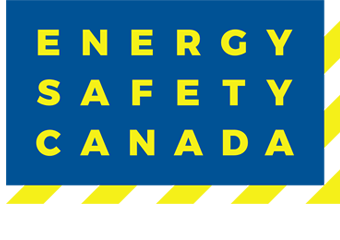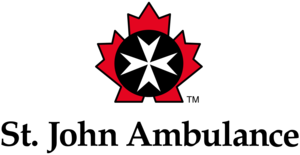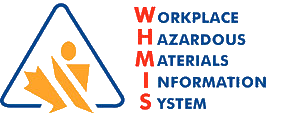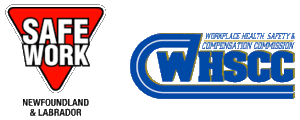Confined Space Entry and Rescue Combined
This safety course is offered on a regular basis at our Safety Training facility in Mount Pearl, Newfoundland
TO REGISTER FOR THIS COURSE, A CANDIDATE NEEDS TO PROVIDE
A valid email address.
First Aid Certification
Fall Protection Certification
Confined Space Entry Certification
Introduction
Confined Space Entry Training is necessary to prevent injuries, fatalities and property damage. This is achieved by educating people on Confined Space hazards and the controls needed to eliminate or mitigate the risk of these hazards and perform work as safely as possible while inside a Confined Space. This 4 days course also focuses on enhancing the ability of students to successfully perform a rescue from a confined space and is valuable information for anyone who may be involved in a confined space emergency.
Course Information
Duration: 4 day course
Components: Theory and Practical
Prerequisites
- First Aid Certification
- Fall Protection Certification
- Confined Space Entry Certification
Course Outline
Chapter 1: Identifying Confined Spaces
- Introduction
- Objectives
- Definition of Confined Spaces
- Confined Space Characteristics
- Exercise 1
- Training
- Review
Chapter 2: Roles and Responsibilities of Workplace Parties
- Introduction
- Objectives
- Role and Responsibilities of Employer
- Role and Responsibilities of Supervisor
- Role and Responsibilities of Worker
- Duties of Occupational Health and Safety Committee
- Worker’s Rights
- Review
Chapter 3: Confined Space Entry Legislation
- Introduction
- Objectives
- Confined Space Entry Legislation
- Emergency Plan Risk Assessment
- CSA Standard Z1006
- Review
Chapter 4: Confined Space Entry Program
- Introduction
- Objective
- Confined Space Assessment Responsibility
- Confined Space Assessment Requirements
- Hazard Identification Process
- Evaluating the Risk
- Controlling Hazards
- Confined Space Program
- Review
Chapter 5: Atmospheric Hazards & Controls
- Introduction
- Objectives
- Atmospheric Hazards
- Exercise 2
- Exercise 3
- Gas Detection Sampling and Strategies
- Gas Testing Equipment
- Order of Testing
- Testing Initial Conditions
- Atmospheric Testing
- Proper Test Procedures
- Qualification of Testers
- Where to Test
- Exercise 4
- Making Atmosphere Safe (Engineering Controls)
- Making Atmosphere Safe (Administrative Controls)
- Preventing Fire and Explosion
- Review
Chapter 6: Health & Safety Hazards
- Introduction
- Objectives
- Health and Safety Hazards
- Isolation Controls
- Controlling Temperature Extremes
- Controlling Noise
- Controls to Prevent Electrical Shock
- Adequate Lighting
- Controlling Slips, Trips and Falls
- Preventing Cave-Ins
- Story
- Review
Chapter 7: Personal Protective Equipment
- Introduction
- Objectives
- Personal Protective Equipment for Confined Space
- Respirators
- Exercise 5
- Respirators
- Review
Chapter 8: Confined Space Roles & Responsibilities
- Introduction
- Objectives
- Confined Space Entry Team
- Roles and Responsibilities of the Entrant
- Roles and Responsibilities of the Attendant
- Roles and Responsibilities of the Gas Detector
- Roles and Responsibilities of Rescue Team
- Roles and Responsibilities of CSE Supervisor
- Additional Training
- Review
Chapter 9: Confined Space Entry Permit
- Introduction
- Objectives
- Purpose of Confined Space Entry Permit
- Required Information
- Case Studies
- Review
Chapter 10: Confined Space Entry Rescue
- Introduction
- Objectives
- Importance of Emergency Rescue Plan
- Types of Rescues
- Roles and Responsibilities of Rescue Plan
- Training Requirements for Rescue Personnel
- First Aid Requirements
- Review
Chapter 11: Accident/Incident Reporting
- Introduction
- Objectives
- Accident/Incident Reporting- Employer
- Accident/Incident Reporting- Commission
- Accident/Incident Reporting- OH&S Division
- Accident/Incident Reporting- Investigation Procedure
- Review
Chapter 12: Practical (One of the below topics are assigned to groups of 4-7 people)
- Retrieval of a tool left in a Mud tank
- Inspection on a Crude Oil Cargo Tank
- Replacement of valve in a Manhole
Chapter 13: Phases of Confined Space Rescue
- Phase I: Preparation
- Phase II: Assessment
- Phase III: Pre-Entry Operations
- Phase IV: Entry and Rescue Operations
- Phase V: Termination
- Review
Chapter 14: Rescue Equipment, Knots & Systems
- Equipment Standards and Regulations
- Units of Measure
- Equipment Description and Capabilities
- Equipment Inspection
- Equipment Repair
- Equipment Logs
- Washing Equipment
- Retiring Equipment
- Knots
- Patient Packaging
- Anchors
- Rescue Systems
- Rope Rescue System Analysis
- Review
Chapter 15: High Point Anchor Systems
- Tripods
- Lifting and Retrieval Devices
- Resultant Forces on High Anchor Points
- Review
- Chapter 4: Communications
- Commonly Used Hand Signals
- Light Signals
- Portable Radios
- Wire Communications Systems
- Components of a Typical Confined Space Communication System
- Review
Chapter 16: Permitting Confined Spaces
- Reasons for Permitting a Confined Space
- Requirements of a Confined Space Entry Permit
- Review
Chapter 17: Review
- Occupational Health and Safety Regulations
- CSA Standards Z1006-10
Exam
Practical 1 – Confined Space Entry
Practical portion of the Confined Entry course will include Bump Testing of gas monitors, inspection and use of air supplying and air purifying breathing apparatuses, as well as pre-entry setup of ventilation systems. A complete hazard/risk assessment of confined space will be conducted using a scenario supplied to students. Isolations will be applied and all personal protective equipment will be used that is needed to complete the assigned task and finally, entry will be made incorporating all the different roles of a Confined Space Entry program. Students will have the opportunity to use all procedures and equipment that are covered in theory portion.
Practical 2 – Confined Space Rescue
The practical portion of the Confined Space Rescue course consists of a multitude of exercise situations. In this exercise, students will have the opportunity to practice Confined Space Rescue using all Equipment and Procedures discussed in theory portion. Students will follow the Phases of a Confined Space Rescue, which include Preparation, Assessment, Pre-entry operations, Entry and rescue operations and Termination and will be provided with the appropriate equipment to carry out a confined space rescue.




